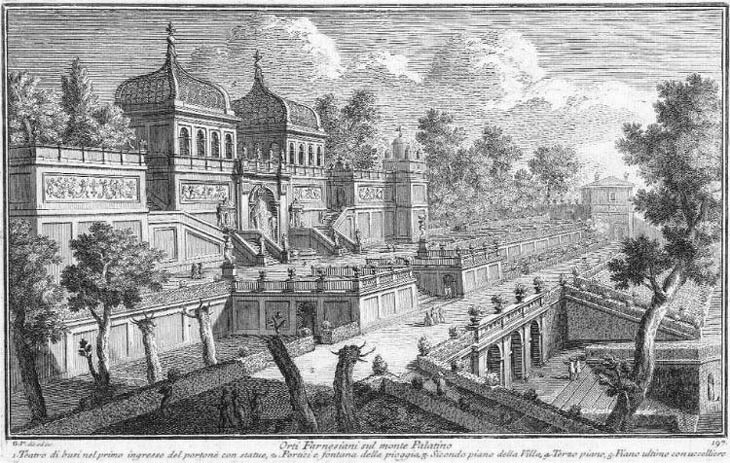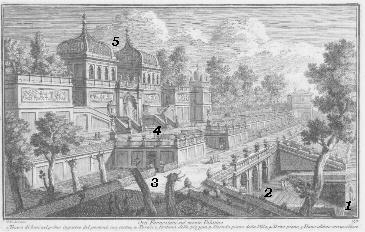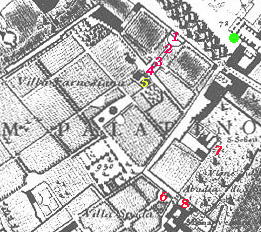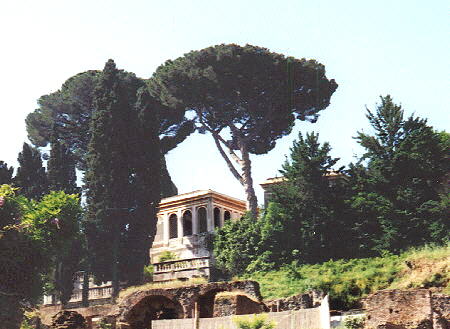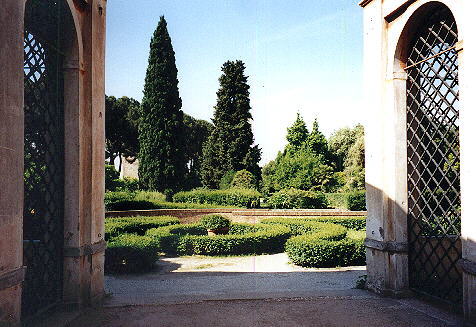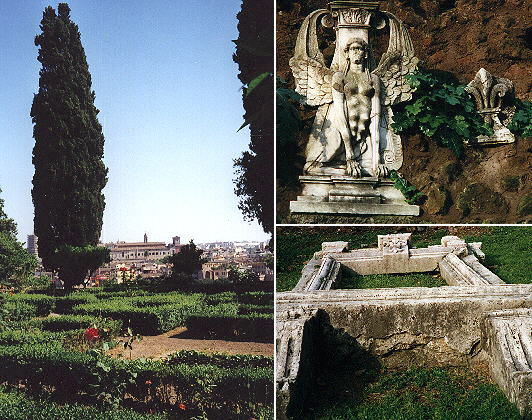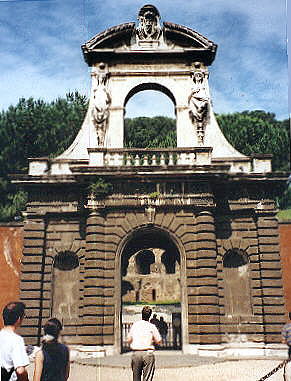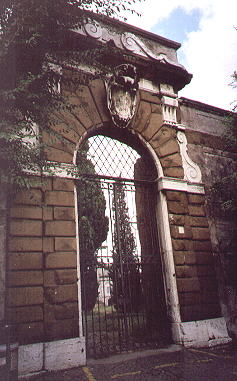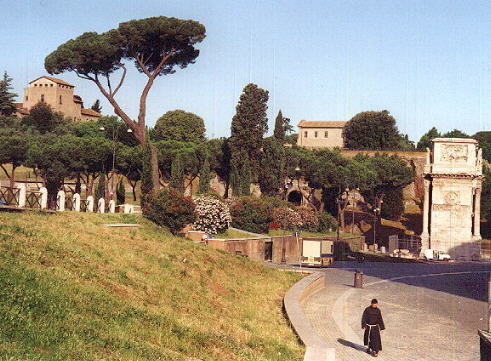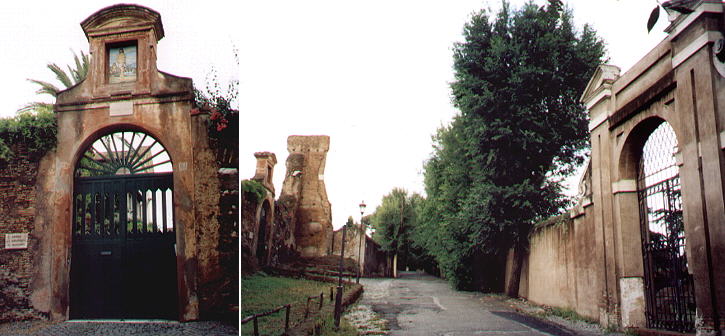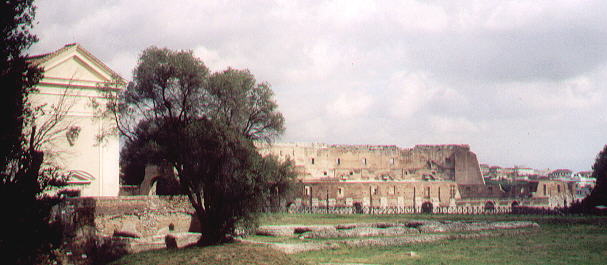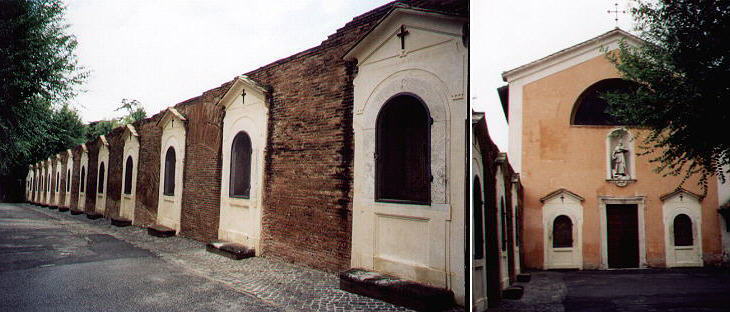  Orti Farnesiani sul Palatino (Book 10) (Map B3) (Day 1) (View C9) (Rione Campitelli) In this page:
Paulus III wanted to build on the Palatine his own Villa. To this
purpose il Vignola designed a vast garden (orti) overlooking the forum.
The approach to the Villa was typical of the Renaissance with stairs, statues and two elegant aviaries.
The view is taken from the green dot in the small 1748 map here below.
In the description below the plate Vasi made reference to: 1) First entrance;
2) Porticoes and Fontana della Pioggia; 3) Second floor; 4) Third floor; 5) Aviaries on the top floor. The small map shows also 6) Entrance to Villa Spada; 7) S. Sebastiano
al Palatino; 8) S. Bonaventura.
The view from the forum is still fascinating. The gardens were inherited by the King of Naples who spoiled the villa to enrich his collection in Naples. Eventually the villa was sold to Napoleon III and then to the Italian government and it was thoroughly excavated to search for the old Roman palaces.
The fine perspective of the entrance can still be admired as well as details of the decoration and the symbols of the Farnese. The fountains were added in the XVIIth century by Girolamo Rainaldi when the supply of water to the Palatine was restored. In the picture above you can see (left) Portico e fontana della pioggia, number 2 in the plate by Vasi and (center and right) Fontana del Teatro, number 4 in the plate.
On an early summer morning the garden at the top of the stairs has the right light and the heat is bearable. Very little else is left in the Forum and in the Palatine of the Farnese period, but wandering about one comes across some signs of it.
The main gate (left) of the Villa by Vignola has been rebuilt in Via di S. Gregorio and it is one of the two entrances to the excavations. Another imposing gate (right) led to Villa Spada which occupied a minor portion of the Palatine. S. Bonaventura e S. Sebastiano al Palatino
The little churches of S. Bonaventura (top left) and S. Sebastiano al Palatino (between S. Bonaventura and the Arch of Constantine) were spared by the extensive excavations of the Palatine and they are today very sought after wedding spots.
The street leading to S. Sebastiano and S. Bonaventura gives a pretty good idea of how the eastern and southern part of Rome appeared to an XVIIIth century traveller: isolated churches, Roman ruins and large Villas. The gate to the left leads to S. Sebastiano while the gate to the right led to Orti Farnesiani.
S. Sebastiano was built in the Xth century on a Roman temple dedicated by Heliogabalus to the Sun. The church and the monastery were protected by walls and towers. The area was abandoned when in 1630 Pope Urbanus VIII acquired it and rebuilt the church (design by Luigi Arrigucci). The picture shows also the upper part of the Colosseum.
The last stretch of the street is flanked by the XVIIIth century chapels of a Via Crucis (Way of the Cross) leading to the
church and monastery of S. Bonaventura built in 1689 by
the Spanish Franciscan Fra Bonaventura (Miguel Gran). The church was built on the site of a large Roman cistern.
Next plate in Book 10: Teatro
di verdure nella Villa Corsini alla Lungara
Go
to |
All images © 1999 - 2003 by Roberto Piperno. Write to romapip@quipo.it
